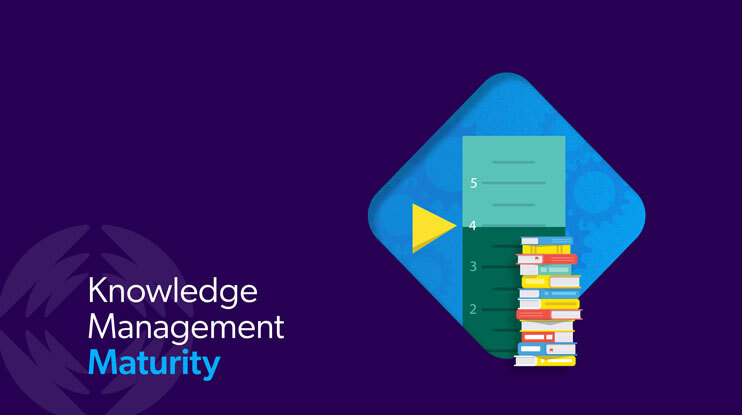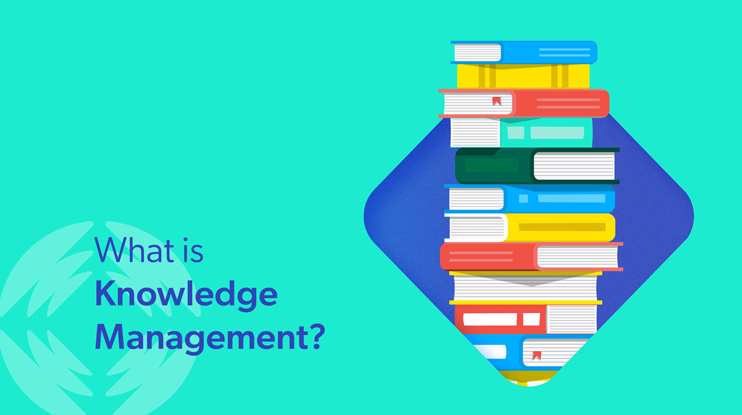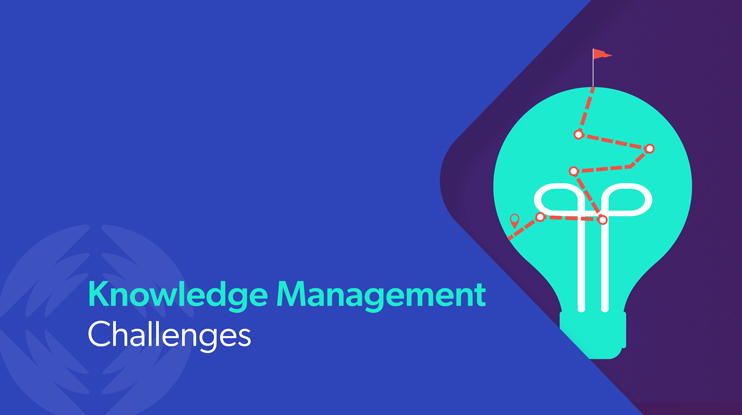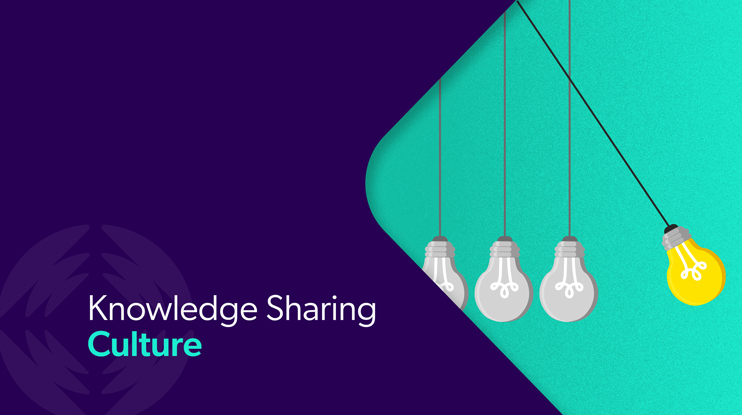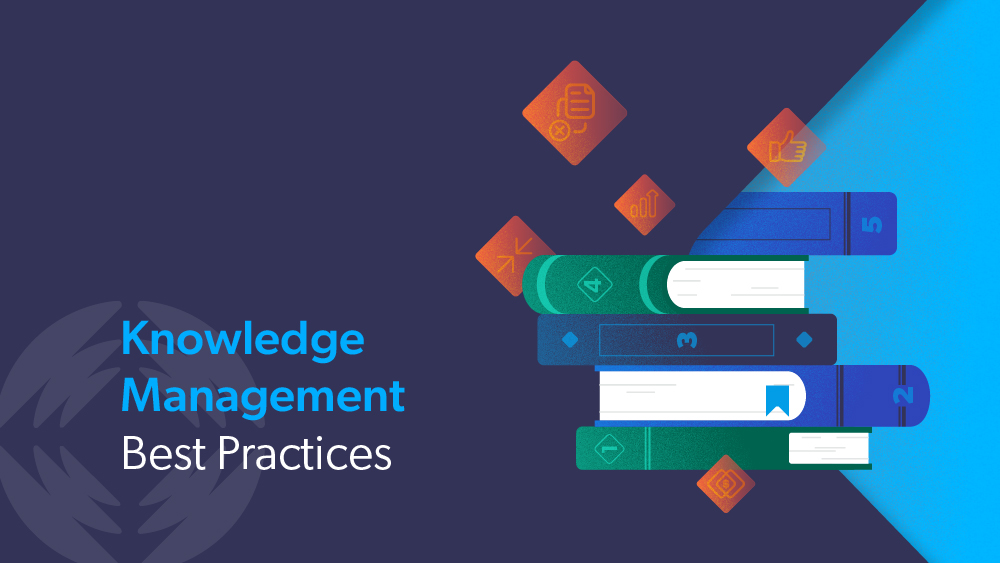It’s no longer a matter of if a customer or employee will self-serve, but when and how. For many, it’s the first and only choice. Making sure they’re successful will depend on the enterprise’s knowledge management maturity: how well it captures, organizes, shares and applies its knowledge assets.
The new era of applied artificial intelligence (AI) has cast this capability in stark relief. As powerful as Generative AI (GenAI) might be (with 70% of contact center leaders confident that GenAI helps with self-service personalization), it relies on quality knowledge data to create this kind of value.
What Is a Knowledge Management Maturity Model?
Quality knowledge data is fundamental to any formalized knowledge management maturity model.
A knowledge management maturity model provides practical understanding of the interconnected parts of a given knowledge management system. That goes for fledgling programs, advanced enterprise programs, and everything in between. Across the board, the knowledge management maturity model serves as a diagnostic framework for assessing and establishing:
- Core competencies across people, processes, technology, and organizational culture
- Benchmarks for measuring progress over time
- Knowledge gaps that could limit the effectiveness of AI
- Roadmaps for advancing knowledge sharing capabilities
- Alignment between knowledge management investments and business goals
Among its many benefits, knowledge management maturity can positively influence business outcomes. According to The State of Knowledge Management in the Age of AI, a survey released by TSIA, these outcomes include a 33% lower incident cost per case and 3.1% higher support renewal rates.
Four knowledge management maturity models remain most prominent today.
Modern Knowledge Management Maturity Models
APQC’s Levels of Knowledge Management Maturity
Creator of one of the foremost models, APQC’s work has broad enterprise visibility. Its model helped inspire the U.S. Army’s own model, KM3. The APQC’s Levels of Knowledge Management Maturity consist of five distinct levels:
- Initiate: No formal knowledge management strategy or dedicated resources
- Develop: Processes established in certain areas with some leadership recognition
- Standardize: Formalized knowledge management processes across the organization
- Optimize: Knowledge activities integrated into processes with strong leadership support
- Innovate: Knowledge management drives innovation and competitive advantage

As organizations move through each maturity level, their knowledge undergoes its own evolution as follows:
| Ad hoc knowledge → Applied knowledge → Leveraged knowledge → Dynamic knowledge |
In terms of assessment, APQC offers its own Knowledge Management Capability Assessment Tool (KM CAT). The KM CAT diagnostic tool evaluates your organization’s maturity — strategy, people, process, and content/information technology, alongside 12 core capabilities (objectives, governance, etc.) — against Top Performers in each category.
TSIA’s Knowledge Management Maturity Model 3.0 Framework
The TSIA Knowledge Management Maturity Model 3.0 Framework was recently updated to reflect new advancements in GenAI. The model, which focuses heavily on enterprise-wide adoption and organizational performance metrics, comprises four phases:
- Start-up
- Overheated
- Maturing
- Optimized
Similar to the APQC model, the TSIA model emphasizes culture, people, process, and technology. Think of these components as an iterative, overlapping ecosystem. Each part feeds into the next, creating a larger information system for the development, capture, and sharing of knowledge between groups.
TSIA recommends evaluating your current organizational knowledge process against each core component. Each component is designed to guide internal conversations about what’s needed to improve organizational knowledge sharing and evolve your company’s knowledge management practice.
U.S. Army’s KM3
KM3 originated within the United States Army (see: Panel: Knowledge Management Maturity Model). This model was influenced by both APQC and another model, Capability Maturity Model Integration from the CMMI Institute.
The KM3 model consists of five stages, typically named:
- Initial: Ad hoc and/or chaotic knowledge management processes; success depends on individual effort
- Repeatable: Basic knowledge management processes established; previous success can be repeated through consistent application of documented procedures
- Defined: Processes documented, standardized, and integrated into the organization
- Managed: Detailed metrics collected and analyzed to assess performance, predict results, and inform decision-making
- Optimizing: Processes continuously improved and adapted with great agility
As the U.S. Army’s original KM3 panel states, stage 1 is “always messy,” while stage 5 is “always elusive.”
Given the inspiration KM3 takes from other models, its assessment areas should come as no surprise. They are: people; process; tools; and organization. Yet these four assessment areas comprise more subcategories than the other models (about 42).
Here is a sample assessment taken directly from the original KM3 panel:

Wiig’s KM Model
Karl Wiig, author of People-Focused Management, developed the Wiig KM Model in 1993. The basis of this model was simple, but profound: the value and usefulness of knowledge depends on its level of organization. The Wiig KM Model consists of four core dimensions:
- Completeness: How much relevant knowledge is available from a given source
- Connectedness: How well knowledge objects are understood and interconnected
- Congruency: Level of consistency across the facts, concepts, perspectives, clues, and relationships shared between knowledge objects
- Perspective: How knowledge is understood from particular viewpoints or for specific purposes
Under the Wiig model, you’ll find strong emphasis on the process of knowledge building, marshaling (coordinating, facilitating, knowledge pooling, and orchestration), and application. As with the TSIA model, the Wiig KM Model is meant for self-assessment.
Comparing the 4 Knowledge Management Maturity Models
All four of these models provide a structured path to knowledge management improvement. In addition, all four emphasize the integration of people, process, and technology. You’re likely to find enterprises using the two more frequently updated models from APQC and TSIA.
Whichever model they use, enterprises typically follow a linear progression line; they reach a higher maturity level as they adopt more mature practices.
| Key Differences Between APQC, TSIA, KM3, and Wiig | ||||
| KM Maturity Model | Number of Levels/Phases | Assessment Detail | Focus | Assessment Tools |
| APQC | Five | Highly granular | Enterprise/business-centric | Formal tool (CAT) |
| TSIA | Four | Broader in scope | Enterprise/business-centric | Self-assessment |
| KM3 | Five | Uses sub-categories | Organizational/military | Focus groups |
| Wiig | Dimension-based | Qualitative | Knowledge quality-centric | Self-assessment |
Success Stories: the Benefits of Knowledge Management Maturity
What all four models promise is a discernable, measurable line between knowledge management maturity and broader business outcomes.
With the more modern models, you see how the interplay between knowledge management and underlying technologies contributes to these outcomes. In both the APQC and TSIA models, the expansion (and evolution) of AI factors significantly.
The following Coveo case studies typify the AI success that results from strong knowledge management maturity.
Tyler Technologies: Unified Knowledge Platform → 31% Decrease in Support Inquiries
The Tyler Technologies case study shows a company moving firmly into the standardized phase of knowledge management maturity. They’ve moved on from fragmented (ad hoc) information to a unified knowledge platform (systematic knowledge management).
The company’s implementation addressed a critical scaling challenge: enabling customer support representatives (CSRs) to navigate a towering amount of information while resolving customer issues quickly. Between 5 million CRM cases, 2.6 ONYX incidents, and 600,000 Jira issues, they needed a better way to find relevant information. By developing a comprehensive knowledge management strategy, they transformed their support capabilities while maintaining their reputation for high-quality service.
Key Indicators of Knowledge Management Maturity:
- 23% average improvement in First Call Resolution across departments
- 33% reduction in onboarding Civic Services reps, with a 7% increase in agent proficiency
- Support agents’ time redirected to value-driven customer activities
- Implementation of self-service analytics to track knowledge effectiveness
athenahealth: KCS Implementation → Self-Service Success
The athenahealth case study aligns well with the maturing phase of the TSIA model. Of note is the company’s implementation of Knowledge-Centered Service (KCS) methodology, with robust analytics to drive continuous improvement.
Following their merger with Virence Health, athenahealth recognized the need to efficiently share expertise among 160,000 healthcare providers. Their approach focused on addressing content gaps and measuring knowledge sharing effectiveness through sophisticated analytics.
Key Indicators of Knowledge Management Maturity:
- Document deflection rate as a critical KPI
- Analytics-driven content improvement process
- Behavioral metrics for knowledge usage tracking
- Integration of knowledge sharing into employee workflows
Forcepoint: Eliminated Knowledge Silos → Measurable Case Deflection
Forcepoint illustrates the transition from overheated to optimized phases in their knowledge management journey. Initially struggling with knowledge silos and lack of measurable case deflection, they implemented a unified AI search and recommendation platform that transformed both customer and employee experiences.
Their progression shows how organizations can evolve through maturity stages. In athenahealths’ case, this meant: a) systematically addressing knowledge fragmentation while b) simultaneously implementing technologies that scale knowledge delivery.
Key Indicators of Knowledge Management Maturity:
- Unified knowledge bases across customer and employee experiences
- Measurable case deflection metrics
- Enhanced agent proficiency
- Progressive technology adoption
F5 Networks: AI Knowledge Delivery → Accelerated Digital Transformation
The F5 Networks case study demonstrates the innovate level of knowledge management maturity. F5 uses advanced AI to transform knowledge sharing as part of a broader digital business transformation. Their approach to management has become a strategic business enabler.
F5’s Vice President of Digital Transformation leveraged AI-powered search and recommendations to unite 50+ web properties into a cohesive digital experience, supporting their transition to a subscription-based business model.
Key Indicators of Knowledge Management Maturity:
- Knowledge management integrated with strategic business process transformation
- Unification of 50+ existing knowledge sources
- AI-enhanced self-service measured by specific success metrics
- Knowledge management in marketing and sales
- GenAI implementation grounded in knowledge foundations
Choosing the Right Model
To recap:
- APQC provides a comprehensive assessment framework with formal tools. Use it for benchmark-driven evaluation against industry standards.
- TSIA offers a more GenAI-centered approach to the knowledge management process. An organization looking to balance knowledge management with practical implementation may choose this model.
- KM3 was created by the military for organizations requiring reliable knowledge in complex operational environments with expert systems.
- Wiig emphasizes collective intelligence, knowledge quality, and organizational fundamentals. More of a foundational model for addressing core structural issues.
To the extent that an enterprise needs AI, AI fundamentally needs enterprise knowledge. It needs strong information management. One of the main goals of a knowledge management maturity scale. One of the main goals of a knowledge management maturity model is to deepen and expand the value of an AI.
Each model offers a framework, categories, metrics, and assessment tools that may align better with your organization’s context.
Dig Deeper
Learn impactful ways to integrate AI into your knowledge management strategy at every stage of project and service management.

